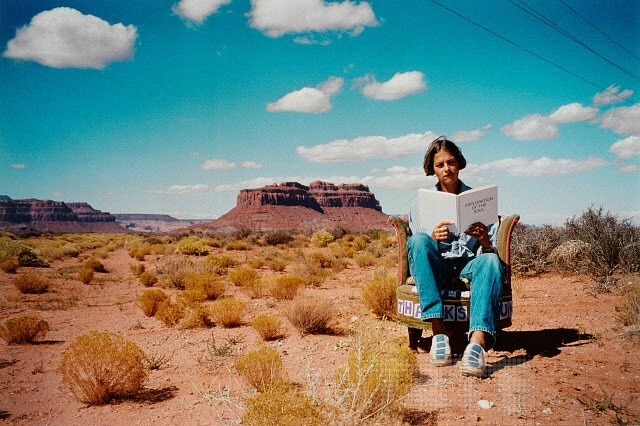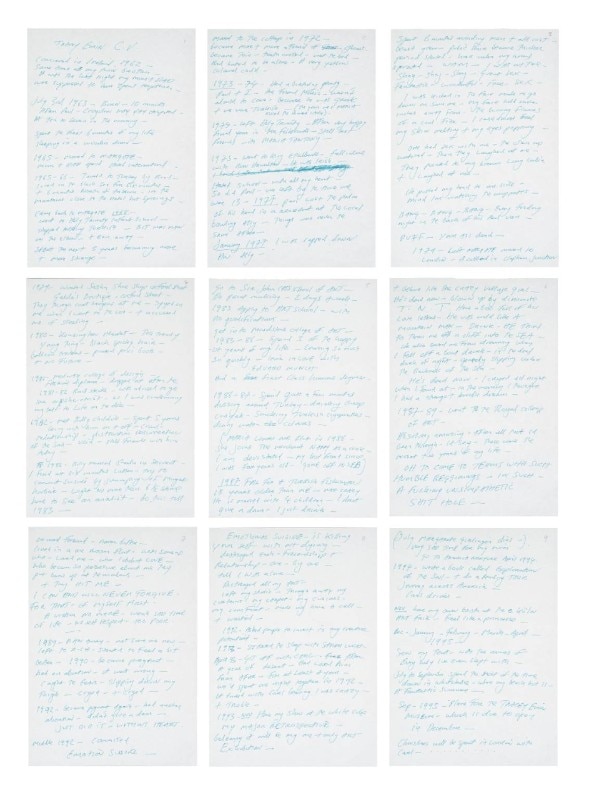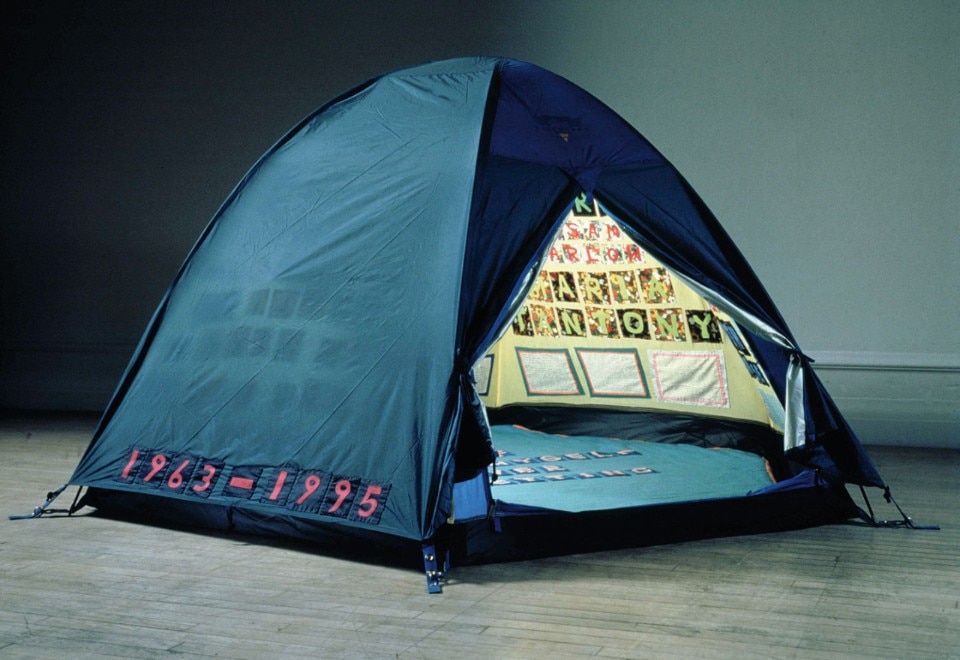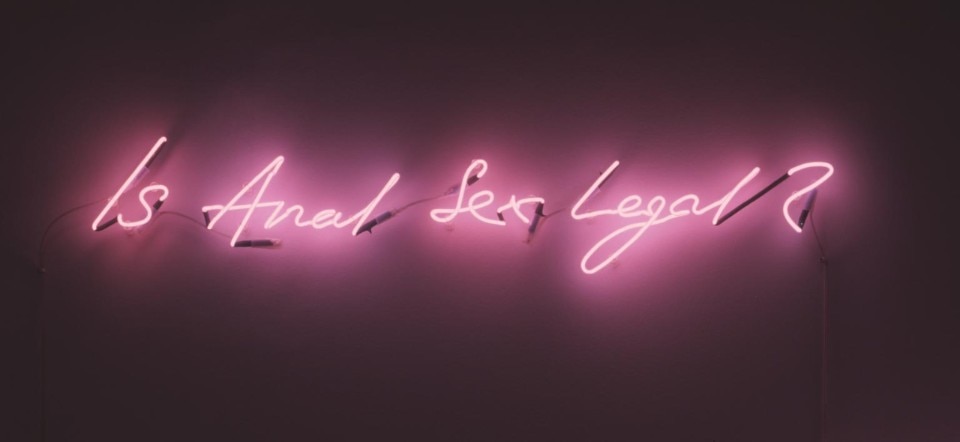In the United Kingdom, the King’s Birthday Honors is an annual celebration in which the King awards honors to citizens who have distinguished themselves in the fields of arts, sciences, medicine, education, or for services rendered to the community. Among the names honored in 2024, alongside actress Imelda Staunton and writer Monica Ali, is the British artist Tracey Karima Emin.
“Dame Tracey Emin – it has a certain charm, doesn’t it?” the artist stated in an interview with the BBC.
Proud or ironic? Perhaps both, we cannot know for sure. Certainly, this recognition is a sign of changing times, celebrating the courage of a career dedicated to challenging the boundaries between public and private, confronting taboos head-on, and always pushing a little further.
Tracey Emin has been navigating the waters of contemporary art for over 25 years. Raw, sincere, authentic. So bold and honest that she is sometimes mistaken for a rebel, through her work over these years she has exposed the many hidden flaws in the romantic ideal of the artist, opening our eyes to the impact of gender disparity in women's lives.
William Blake as a woman, written by Mike Leigh.
David Bowie
Born in 1963 to an English mother of Romani descent and a Turkish Cypriot father, Tracey Emin grew up in Margate, Kent, alongside her twin brother Paul. At the age of 13, she was raped, an experience she comments on as “something that happened to many other girls.” She studied art despite facing two traumatic abortions and contemplating giving up everything. In the 1980s, she became the bad girl of Young British Art. This was followed by a seminal relationship with fellow artist Sarah Lucas and with gallery owner and curator Carl Freedman, leading up to her participation in the Turner Prize. Her works have since been collected by institutions such as the MoMA and Tate. Recently, she battled illness, including bladder cancer, from which she has now recovered.
I'm sure if I had been born 400 years ago, they would have burned me, drowned me, or buried me alive. The witch hunt continues and is as cruel today as it was then; there are still women being burned alive, stoned to death
Tracey Emin
If we know everything about Tracey Emin, it’s because she has never stopped turning her life into art, starting from that journey in 1994 from San Francisco to New York. She self-financed it through public reading sessions of her autobiographical book “Exploration of the Soul,” which she held along the way, encountering the public.

Works without filters have given her the aura that makes her a kind of Joan Jett of contemporary art. But the secret to her rock spirit lies not so much in her ability to provoke, but in the courage to display her own vulnerability.
Because Emin is all there, in her works. Raw and unfiltered, even when not showing an inch of skin. A dame ready to prove that there is no art where there is modesty, and no life but in truth.
1. Tracey Emin, Tracey Emin CV, 1995

Tracey Emin CV is a work composed of nine A4 white sheets, handwritten in turquoise ink. Here, Emin lists, in the form of a curriculum vitae, all significant events of her life starting from her conception in 1962, through her first rape at the age of thirteen, her move to London, and enrollment in art school. Emin candidly recounts instances of sexual abuse, as also depicted in her video work Why I Never Became a Dancer from the same year. The piece documents traumatic experiences as well as pivotal moments that led to her evolution and, in a way, her salvation.
2. Tracey Emin, My Bed, 1999

Nominated for the 1999 Turner Prize, My Bed is an installation consisting of the artist’s unmade bed surrounded by debris accumulated during days spent in bed due to the end of a relationship: used condoms, empty liquor bottles, pregnancy tests, food-stained sheets, cigarettes.
The artwork was part of Charles Saatchi’s collection and reportedly displayed in his dining room. In 2014, it was sold at Christie's auction for £2.5 million ($3.77 million) to German collector Christian Duerckheim. Since March 31, 2015, My Bed has been exhibited alongside works by Francis Bacon at Tate Britain.
3. Tracey Emin, Everyone I Have Ever Slept With 1963–1995, 1995

Displayed at the “Sensation” exhibition in 1997, which showcased Saatchi’s collection at the Royal Academy of Arts in London, Tracey Emin presented a tent embroidered with 102 names of people who had slept with her from 1963 to 1995. The list was long mistakenly associated with a list of her sexual partners, while it actually includes family members, friends, partners, and lovers, revealing how the public sexualized both the artwork and the artist.
4. Tracey Emin, Is Anal Sex Legal? and Is Legal Sex Anal?, 1998

Is Anal Sex Legal is one of Emin’s early neon light works, now recognized among her most famous and distinctive due to its characteristic handwriting. It is accompanied by another neon sign, Is Legal Sex Anal, which mirrors the first by reversing the word order and the meaning of the phrase. The theme of anal sex is explored by Emin from a feminist perspective, critiquing social expectations that limit women’s sexual pleasure.
5. Tracey Emin, The Mother, 2017

Unveiled in 2022 at the Inger Munch’s Pier on the Museum Island in Oslo, The Mother is a nine-meter-high, 18.2-ton bronze sculpture born from a small clay model shaped by the artist. The artwork depicts a naked woman kneeling, leaning over an invisible child. Aghast at the absence, she forever gazes with empty arms and bowed head, on the fjord’s shore. The piece pays homage to motherhood, both fulfilled and lost, reminiscent of Edvard Munch’s mother, Laura, who passed away when the artist was five years old.
Opening image: Portrait of Tracey Emin. Photo Ollie Hammick


